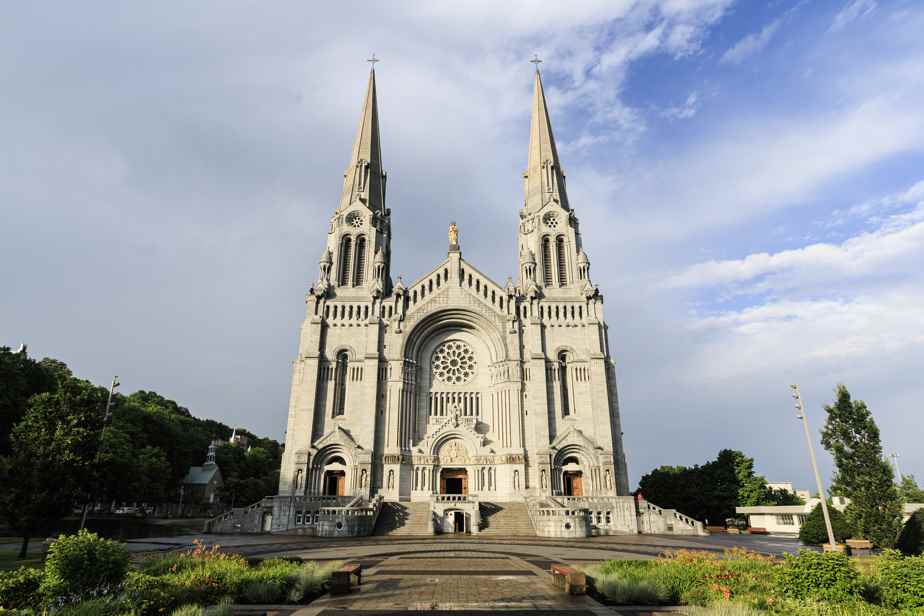(Montreal) The choice of Pope Francis to hold a mass at the Sainte-Anne-de-Beaupré sanctuary during his trip to Canada is far from trivial. The name evoked by this place, host of Aboriginal pilgrimages for more than 300 years, remains an important element of Catholicism among the First Nations.
Posted at 10:29
A valued religious figure among Francophones, Saint Anne, the grandmother of Jesus, is also valued in several communities of the first peoples.
“I think the good Saint Anne has always been part of the spiritual life of the Aboriginal people since perhaps the arrival of the clergy. She is very much requested by the Innu, among others, ”describes the community health coordinator for the Ekuanitshit health center, on the North Shore, Tania Courtois. Innu and whose father attended the external schools of the boarding schools, she had to accompany more than a hundred people to Quebec, including survivors, to attend the mass of the sovereign pontiff on July 28.
Her features as a strong woman and the healing powers that are attributed to her have in particular aroused the adhesion of the First Nations to this figure of Catholicism, explains Denis Gagnon, professor of anthropology at the Université de Saint-Boniface, in Winnipeg, in Manitoba.
By her title of grandmother, Saint Anne represents “the pillar of these great transgenerational families found in the First Nations”, evokes Mr. Gagnon.
“Christ didn’t mean much to them. Someone who sacrifices himself. They were warlike peoples for whom revenge was a very important value,” he explains in an interview.
Mr. Gagnon has conducted academic work on the beginnings of the Sainte-Anne-de-Beaupré sanctuary and the devotion of the Innus of the Lower North Shore to the mother of the Virgin Mary. He met indigenous populations of the region to observe their practices and rituals at the turn of the 2000s.
The Micmacs and Abenakis in Acadia were among the first to take an interest in the character of Saint Anne with the arrival of the missionaries. The cult then spread to the rest of Canada and to the American Northeast, reports Mr. Gagnon.
“Very early”, the First Nations will hear about the sanctuary of Sainte-Anne-de-Beaupré, founded in the 1660s, and will begin to frequent the place, mentions the professor to The Canadian Press.
The first Catholic settlers of the French regime also venerated Saint Anne as a protector against the dangers of navigation, which helped to give strength to this devotion among Aboriginal people, says Louis Rousseau, professor emeritus in the Department of Religious Studies at UQAM.
“Her title of grandmother allows the Aboriginal peoples to understand her as a protector because in their vision of the world, grandfathers and grandmothers, both real and imaginary, have a function of protection. This is undoubtedly the point of contact, ”he says.
The missionaries will also use Saint Anne to convert the First Nations peoples to Catholicism, says Mr. Gagnon.
Praying to Saint Anne in the face of social problems
The miracles attributed to Saint Anne from the 17e century have also possibly made it possible to develop the interest of the First Nations for this character.
“He is a character with whom one can intercede for favors; health, a good hunt, a large family,” points out Mr. Gagnon.
The profound social upheavals that the First Nations have faced have led these populations to invoke Saint Anne to help them, said Mr. Gagnon.
Settlement with the development of reserves is an example. These led to the emergence of issues related to alcohol and drug use in the 1970s and 1980s.
“The elders are a little helpless in the face of these new problems and in which their old religious spirits, which were linked to hunting and the forest, no longer have powers. It is therefore Saint Anne who will replace them, it is she who will be invoked to solve the problems of the world of whites, ”describes Mr. Gagnon.
A “better sharing”
The novena of Sainte-Anne-de-Beaupré which precedes the feast of Saint Anne, July 26, always attracts many First Nations faithful.
Will the latest discoveries and testimonies around former residential schools run by members of Catholic religious congregations lead to an erosion of devotion to Saint Anne among Aboriginal people?
The Chief of the Assembly of First Nations Quebec-Labrador, Ghislain Picard, believes that there is now “perhaps a better sharing” in spiritual practice, with some hindsight on Christian values.
“There is a reappropriation of our traditional values which include spiritual values, without really abandoning the Catholic religion in many cases. I’m not an expert on this, but there are several people who have probably learned a little about marrying the two, ”he says.
Mr. Picard notes that there is no animosity, questioning or discrimination on the religious choice of each.
There is rather an attitude of benevolence, as with Jeannette Vollant, an Innu from the community of Uashat mak Mani-utenam, on the North Shore, and a former boarder.
The septuagenarian, who believes in a great spirit that her ancestors called the great manitou, will go to the Sainte-Anne-de-Beaupré sanctuary to attend the Holy Father’s mass, “out of respect” and “out of love for (his ) people”, as well as for itself.
“I have nothing to say about the people who will continue to go to Sainte-Anne-de-Beaupré, who have a fervor for Saint Anne. It’s each person’s choice,” says Ms.me Flying.
Although he feels estranged from religion, Jay Launière-Mathias, a 28-year-old of Innu and Anishinaabe origin, also “tremendously” respects those for whom Catholicism can help them on their healing journey.
“Personally, as a young Aboriginal, it’s more what happens next that interests me,” he explains. What will be the repair actions. It’s not because the pope apologizes that people are cured. »
Pope Francis’ mass at the Basilica of Sainte-Anne-de-Beaupré is scheduled for July 28 at 10 a.m.
This dispatch was produced with the financial assistance of the Meta Exchanges and The Canadian Press for the news.
